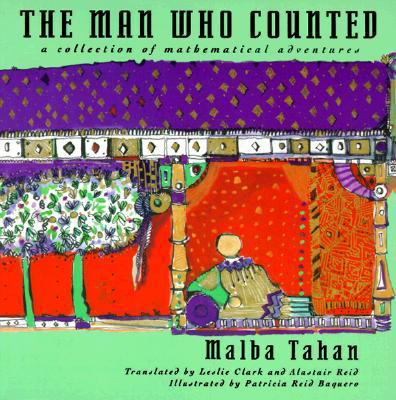 by Malba Tahan
by Malba Tahan
In a story that takes place in the dessert, Bermiz comes across four brothers who have to share 35 camels as part of their inheritance. The sharing is unequal and Bermiz finds a way to solve the problem.
Strategies/Skills Used
Reading Strategy 1: Access background information.
Reading Strategy 2: Predict what will be learned or what will happen.
Reading Strategy 5: Make mental pictures.
Reading Strategy 6: Connect what you read with what you already know.
Reading Strategy 7: Determine the most important ideas and events and the relationship between them.
Reading Strategy 8: Extract information from text, charts, graphs, maps and illustrations.
Reading Strategy 10: Summarize what has been read.
Reading Strategy 11: Make inferences and draw conclusions.
Reading Strategy 12: Reflect and respond.
Writing Skill 2: I organize my ideas based on my purpose for writing.
 TEACHING THE ACTIVITY: PRE-READING
TEACHING THE ACTIVITY: PRE-READING
![]() (1) Invite students to gather in groups. Present the groups with 35 camel counters (or regular counters). Ask students if they can share the camels into two groups that are the same. Ask students if they can do it without having leftover camels? Ask students if they can cut the camel in half? Ask them why that is not a solution to sharing the camels into two groups.
(1) Invite students to gather in groups. Present the groups with 35 camel counters (or regular counters). Ask students if they can share the camels into two groups that are the same. Ask students if they can do it without having leftover camels? Ask students if they can cut the camel in half? Ask them why that is not a solution to sharing the camels into two groups.
(2) Ask students if they can share the camels into three groups and nine groups.
(3) Explain to students that the 35 camels and three brothers are at the center of the story you are about to read to them. Provide an opportunity for students to make predictions about what will happen in the story.
(4) Have students share their predictions in small groups or with the class.
(5) Introduce the title of the story and discuss any further predictions.
 TEACHING THE ACTIVITY: DURING READING
TEACHING THE ACTIVITY: DURING READING
(6) Read aloud the story The man Who Counted: Beasts of Burden. Ask students to listen for key words related to sharing and numbers. You may want to write the information on the white board to help keep students focused.
(7) Pause at key moments in the story where the camels need to be divided up.
(8) Have student use the strategy Listen-Sketch-Draft, and use the counters to try and divide the camels up, as in the story: one-half, one-third, and one-ninth. Have students record their thinking (sketch and draft) on their sheet of paper.
(9) Have students make their predictions on how Bermiz is going to solve the problem and share their ideas.
(10) Hand out the 36th camel (different colour) to each group and invite the students to follow what Bermiz does to solve the problem.
 TEACHING THE ACTIVITY: POST-READING
TEACHING THE ACTIVITY: POST-READING
(11) Have students draw out the solution to the problem in the story using their math journals.
(12) Challenge students to find another number that can be divided into one-half, one-third, and one-ninth.
(13) Using this number, invite students to create their own sharing stories using fractions, following the Write Like a Writer framework.
(14) Encourage students to use similar style, purpose, sentence structure and key words as the author in the Beasts of Burden text. Pictures can also be included.
(15) Invite students to share their completed stories in pairs, small groups or with the class.
 TEACHING THE ACTIVITY: POST-READING EXTENSION
TEACHING THE ACTIVITY: POST-READING EXTENSION
 (16) Download the PowerPoint for extensions and additional lesson ideas.
(16) Download the PowerPoint for extensions and additional lesson ideas.